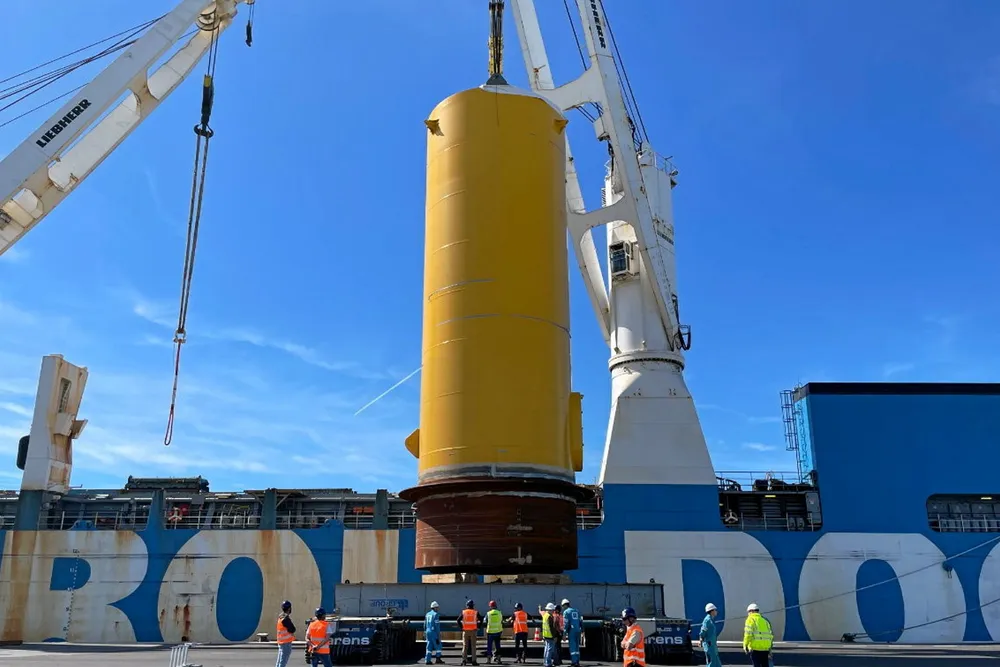Why TotalEnergies is thinking again over floating wind: 'It still looks costly' says top executive
French oil giant has been gobbling up assets in Germany's bottom-fixed offshore wind play but wants to rethink its approach to floating

One project directly affected by the change is Gray Whale, a 1.5GW floating wind development in South Korea that has been submitted to a major engineering rethink.
In a frank discussion about the challenges facing floating wind, TotalEnergies’ head of development for offshore wind Europe, Edouard Bourdin, admitted that the decision to refocus on fixed bottom represents something of a U-turn for the company.
“When we entered the renewable sector, we thought, 'okay, we are quite seasoned in offshore activities, this is the way to go', and there was a natural focus on floating offshore wind,” he mused.
Equity positions were taken in floating projects in locations as diverse as South Korea and Wales, but a 20% stake on a demonstrator project in the South of France has proven most influential in steering TotalEnergies toward a rethink.
The EolMed wind project, consisting of three 10MW Vestas wind turbines mounted on steel semisubmersible foundations, won funding under the French government’s Investment for the Future programme.
TotalEnergies acquired its position in the project in 2020, joining French renewables company Qair and floating technology supplier BW Ideol.
Foundation components were built at locations as diverse as Southern France, Spain, Italy and Croatia, and integrated at a new renewable marine energies facility at Port-La Nouvelle, southern France.
"The logistics are quite challenging, with components coming from different shipyards or fabrication sites,” says Bourdin.
The turbines are now awaiting installation at the port, with the export cable and floating export hub and cable anchored and connected, but the experience has not spurred TotalEnergies forward.
"We thought we would see whether we could replicate our knowledge and build in the most cost effective manner,” says Bourdin, who admits that the lessons learned on this front were in fact discouraging for a rapid commercial buildout for floating wind projects.
“We said, 'okay, floating might be for the next decade',” he says.
"We are trying various options. But all in all, floating wind still looks costly. For now, we are refocusing on fixed-bottom,” Bourdin states.
The starting point for a rethink is the Culzean pilot floating wind project in the North Sea, where TotalEnergies is working with a lighter, modular Ocergy semi-submersible design that purports to facilitate faster assembly and optimised costs.
The 3MW single-turbine Culzean will supply power to an offshore oil platform in the North Sea under Crown Estate Scotland’s Innovation and Targeted Oil & Gas (INTOG) leasing round.
Gray Whale
A pivot toward fixed-bottom wind could imply that TotalEnergies will slow down or even exit some existing floating projects.
One development already affected is Gray Whale, a 1.5GW floating project that is eligible to bid in South Korea’s next offshore wind tender, scheduled for later this year.
Working with project partners Corio Generation and SK Ecoplant, TotalEnergies has decided to subject this flagship floating wind project to a major engineering review, looking for ways to reduce capital costs.
Bourdin acknowledges that the decision to rethink the Gray Whale design was made "in the light of the experiences the company is having with floaters".
Gray Whale is intended to be the first phase in the greater 2.5GW BadaEnergy wind farm portfolio, with arrays located off the coast of Ulsan and South Jeolla.
“The key challenge is in the floater itself, because the wind turbines are essentially the same as those used on onshore activities. To us, once you solve the floater issue, all the other costs, such as cables and wind turbines, are more or less known,” he says.
Cooling to Britannia?
Bourdin did not state what implications TotalEnergies’ cooling ardour for floating offshore wind might have for UK projects, but he offered some encouragement for iconic projects such as Erebus, a 100MW demonstration project set to be developed in the Celtic Sea under a joint venture with Irish offshore wind developer Simply Blue.
Erebus was not bid at the UK’s AR5 renewable energy auction last year when the maximum strike price for the floating offshore wind Contracts for Difference strike price was £116/MWh.
TotalEnergies has not revealed whether an AR6 bid was ever placed with Erebus, amid some press reports have suggested that TotalEnergies was looking to offload its 80% stake in the joint venture.
Bourdin hinted at continued interest when asked about Erebus and the bigger Celtic Sea project Valorous.
“These were clearly precious projects to our management because Erebus was one of the first projects we entered for floating in the UK. We are happy with it, but we are assessing what should be done if we can find a solution in the short term. You can have strong beliefs, but you still have to adjust,” he said.